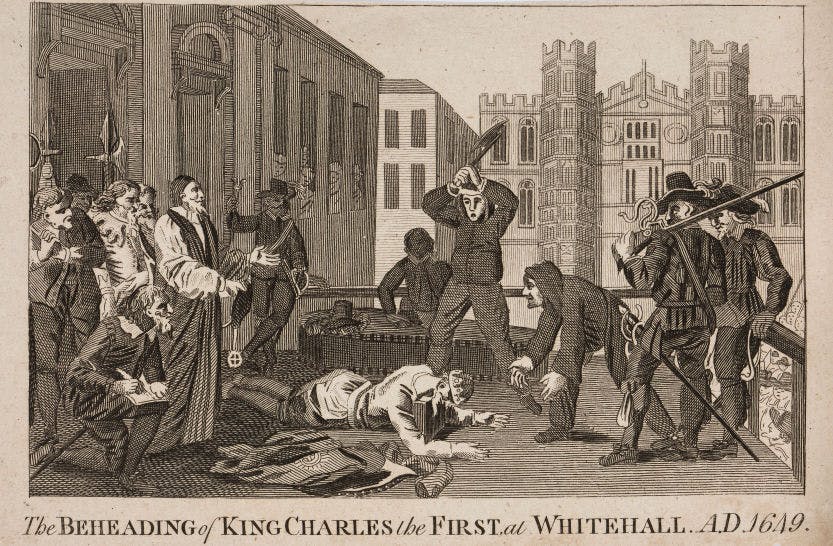The King’s head was held up to the crowd. The spectators, some who had watched in approval and some in dismay, were quickly dispersed by officials, but a few sought grisly souvenirs of the event rushing forward to dip their handkerchiefs into the royal blood, ‘by some as trophies of their villainy; by others as relics of a martyr. The execution of Charles the First 1649.Tens of thousands of spectators saw the King’s head in the executioner’s hands and in the early 1660s they saw Regicides ‘hung, drawn and quartered’. This was very important in a revolutionary period as there had to be no ambiguity about the power of the state. Public execution served a legitimate purpose. Public executions over the next 200 hundred years lost legitimacy. Capital punishment was extended to 220 offences and executions acquired a circus like atmosphere. A depraved atmosphere. Public executions were frequent and well attended. They fell into disrepute in the Victorian era. Gory spectacles ceased to be entertaining. In 1868 they stopped altogether. Executions were held inside prisons until abolition in 1965.
Samuel Pepys attended both Charles’s execution and that of the Regicide Major-general Harrison. On both occasions he supported the execution. Pepys proved Cromwell’s aphorism true: “Do not trust to the cheering, for those persons would shout as much if you and I were going to be hanged.*” His description of the execution of Harrison is famous:
“I went out to Charing Cross [London] to see Major-general Harrison hanged, drawn, and quartered; which was done there, he looking as cheerful as any man could do in that condition. He was presently cut down, and his head and heart shown to the people, at which there was great shouts of joy.*” Pepys’s career depended on applauding the brutal execution of Regicides. (Read more.)
More about Tyburn, HERE.
Share



















2 comments:
Watching executions was indeed very important in a revolutionary period as there had to be NO ambiguity about the power of the state. But I am not sure that the depraved circus-like atmosphere was attractive to sightseers. The executions were well attended, I am guessing, because everyone was expected to turn up and no-one wanted to be chased up. It was like a public lesson in government control i.e this is what could happen to you if...
Yes, exactly. And many people were horrified as well.
Post a Comment